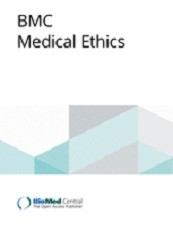Najat Tajaâte, Nathalie van Dijk, Elien Pragt, David Shaw,A. Kempener‑Deguelle, Wim de Jongh, Jan Bollen,Walther van Mook

Abstract
Background: A patient who fulfils the due diligence requirements for euthanasia, and is medically suitable, is able to donate his organs after euthanasia in Belgium, the Netherlands and Canada. Since 2012, more than 70 patients have undergone this combined procedure in the Netherlands. Even though all patients who undergo euthanasia are suf‑ fering hopelessly and unbearably, some of these patients are nevertheless willing to help others in need of an organ.
Organ donation after euthanasia is a so‑called donation after circulatory death (DCD), Maastricht category III procedure, which takes place following cardiac arrest, comparable to donation after withdrawal of life sustaining therapy in critically ill patients. To minimize the period of organ ischemia, the patient is transported to the operating room immediately after the legally mandated no‑touch period of 5 min following circulatory arrest. This means that the organ donation procedure following euthanasia must take place in the hospital, which appears to be insurmountable to many patients who are willing to donate, since they already spent a lot of time in the hospital.
Case presentation: This article describes the procedure of organ donation after euthanasia starting at home (ODAEH) following anesthesia in a former health care professional suffering from multiple system atrophy. This case is unique for at least two reasons. He spent his last conscious hours surrounded by his family at home, after which he underwent general anaesthesia and was intubated, before being transported to the hospital for euthanasia and organ donation. In addition, the patient explicitly requested the euthanasia to be performed in the preparation room, next to the operating room, in order to limit the period of organ ischemia due to transport time from the intensive care unit to the operating room. The medical, legal and ethical considerations related to this illustrative case are subsequently discussed.
Conclusions: Organ donation after euthanasia is a pure act of altruism. This combined procedure can also be performed after the patient has been anesthetized at home and during transportation to the hospital.
Tajaâte N, van Dijk N, Pragt E, Shaw D, Kempener‑Deguelle A, de Jongh W et al. Organ donation after euthanasia starting at home in a patient with multiple system atrophy. BMC Medical Ethics. 2021;22(120).